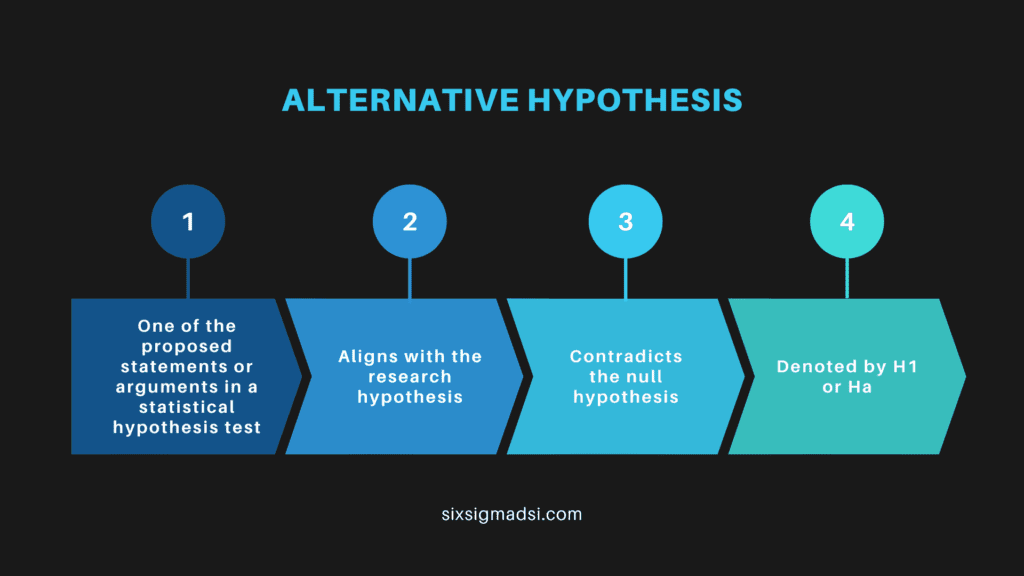Table of contents
Estimated reading time: 3 minutes
In statistical hypothesis testing, the alternative hypothesis is a position that states something is happening, a new theory is preferred instead of an old one (null hypothesis). It is usually consistent with the research hypothesis because it is constructed from a literature review, previous studies, etc. However, the research hypothesis is sometimes consistent with the null hypothesis.
To understand, you first need to understand what the null hypothesis means. The word hypothesis means a working statement. In statistics, we’re interested in proving whether a working statement (the null hypothesis) is true or false. Usually, these working statements are things that are expected to be true. So, the Alternative Hypothesis would be the contrary or opposite of the null.
In statistics, alternative hypothesis is often denoted as Ha or H1. Hypotheses are formulated to compare in a statistical hypothesis test.

Understanding Hypotheses
Before delving into the Alternative Hypothesis, it’s essential to grasp the basics of the hypothesis. A hypothesis is a statement or educated guess that proposes an explanation for a phenomenon. It serves as a starting point for scientific investigations, providing a foundation for research questions and predictions.
The Null Hypothesis: To comprehend the Alternative Hypothesis fully, we must first acquaint ourselves with its counterpart—the Null Hypothesis. The Null Hypothesis represents a default position that assumes no effect, no difference, or no change. It acts as a baseline against which researchers compare their findings to determine statistical significance.
Alternative Hypothesis: Often denoted as H1 offers an alternative perspective to the Null Hypothesis. It posits that there is a significant effect, difference, or change in the population that the researcher is investigating. Essentially, the Alternative Hypothesis challenges the status quo and suggests that there is something noteworthy to be explored.
Types of Alternative Hypothesis
Alternative Hypotheses come in various forms, each tailored to the nature of the research. These may include directional hypotheses, indicating the expected direction of the effect, and non-directional hypotheses, leaving the direction unspecified. We’ll explore how these nuances impact the interpretation of research findings.
Importance in Scientific Research
As it guides the statistical analysis of data. Researchers use various statistical tests to determine whether the observed results are consistent with the Null Hypothesis or if there’s enough evidence to support the Alternative Hypothesis. Understanding this process is pivotal for drawing meaningful conclusions from experiments.
Common Pitfalls and Challenges
While is a powerful tool in scientific inquiry, it is not without its challenges. We’ll discuss common pitfalls researchers may encounter, such as Type I and Type II errors, and the importance of selecting an appropriate level of significance.
Conclusion
In the intricate landscape of scientific exploration, the Alternative Hypothesis stands as a beacon guiding researchers toward uncovering new truths. By challenging the null assumption, scientists open doors to discovery, pushing the boundaries of knowledge and contributing to the ever-evolving tapestry of human understanding.











